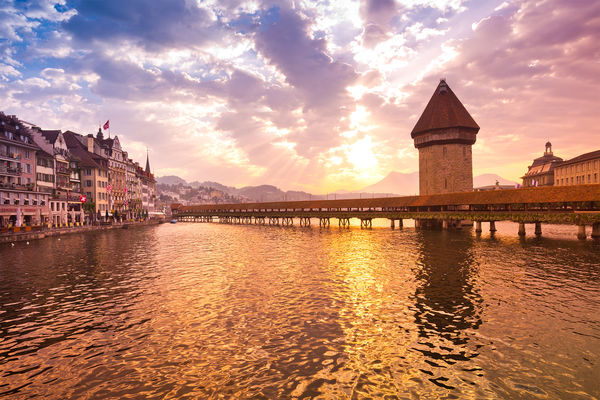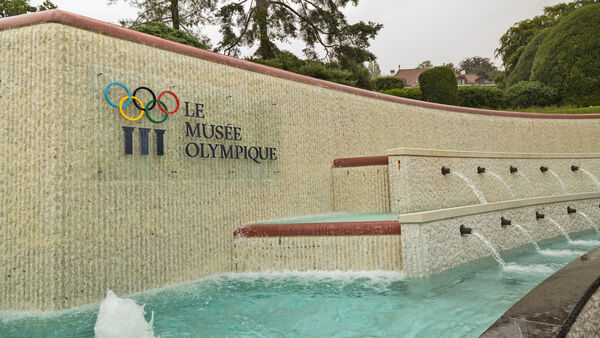Switzerland’s Urban Charms
By Rick Steves

Swiss cities remind me of the guy in high school who's great at sports, has perfect hair and the best girlfriend, and whom all the teachers love. He's just too perfect. Sometimes you just want to see him trip or get a pimple. Switzerland's cities can seem too perfect, too. For me — and most travelers — the mountains provide more real travel thrills per mile, minute, and dollar. But don't neglect the pristine urban offerings in Zürich, Luzern, and Lausanne. With interesting art, colorful old towns, and serene waterfront settings, these cities are worthy stops as you head for the hills.
Zürich, located in the north, is the biggest city in Switzerland — and a major transportation hub. Even though you won't find a hint of Heidi or the Swiss Miss, Zürich makes for an enjoyable quick visit.
Like most Swiss cities, Zürich embraces its resident body of water in a fun-loving way. The lakefront is a springboard for romantic walks, bike rides, and cruises. A great way to glide across town is to catch the river boat, which functions like a city bus, and just enjoy the view. Its old town is lively night and day with cafés, galleries, and a colorful cobbled ambience. Touted as Europe's most "fountainous" city, Zürich has more than a thousand fun and fresh fountains, spouting water that's as good as the bottled stuff — a blessing in a country where restaurants charge for a glass of tap water.
The city's art treasure is a set of Chagall stained-glass windows, located in the Fraumünster church. Done in Chagall's inimitable painting style — deep colors, simple figures, and shard-like Cubism — the five towering windows depict Bible scenes.
An hour south of Zürich, Luzern sprawls along the edge of a lake at and the foot of looming Mt. Pilatus. At its core is a charming old town paved with cobblestones, dotted with fountains, and still partially ringed by tall protective walls.
Luzern's Chapel Bridge — one of its two picture-perfect wooden bridges — was built at an angle to connect the town's medieval fortifications. Today it serves strollers rather than soldiers. More than 100 colorful paintings — many of them originals dating from the 17th century — hang under the bridge's rafters, showing scenes from Luzern and its history. Swans cluster near the bridge. Locals say they arrived in the 17th century as a gift from Louis XIV in appreciation for the protection his Swiss Guards gave him.
For fans of Picasso, Luzern's Rosengart Collection is a must, with several dozen black-and-white candid photographs of the artist. You'll see Picasso in the bathtub, getting a haircut, playing dress-up, and horsing around with his kids. I've seen a pile of Picassos, but never have I gotten as personal with him as I did here.
If you're flying into (or out of) Geneva's airport, a good first (or last) stop is Lausanne, perched elegantly above Lake Geneva (known in French as Lac Léman).
Lausanne has two tourist zones: the idyllic waterfront area of Ouchy (pronounced "oo-shee") and the tangled and historic old town, directly uphill from the lake. Locals nicknamed their town "the San Francisco of Switzerland" for all its hills. There's no way to see it without lots of climbing.
On the Ouchy lakefront is the top-notch Olympic Museum (Lausanne has been home to the International Olympic Committee since 1915). The museum celebrates the colorful history of the games, with a century's worth of ceremonial torches and a look at how medals have changed over the years. This place is a thrill for Olympics buffs — and plenty of fun for those of us who just watch every two years. Surveying gear from each sport (such as Carl Lewis' track shoes and Sonja Henie's ice skates), you can follow the evolution of state-of-the-art equipment.
One of Europe's most thought-provoking art galleries is Lausanne's Collection de l'Art Brut, presenting works produced by people "free from artistic culture and free from fashion tendencies" — many of whom were labeled (and even locked up) by society as criminally insane. Thumbnail biographies of these outsiders give insight into their unbridled creativity.
In 1945, the artist Jean Dubuffet began collecting art he called "brut" — created by self-taught, highly original individuals who weren't afraid to ignore rules. In the 1970s, he donated his huge collection to Lausanne, and it has now expanded to 70,000 works by hundreds of artists: loners, mavericks, people on the fringe, prisoners, and mental ward patients. Touring the idiosyncratic collection, you can't help pondering the fine line that separates sanity and insanity when it comes to creative output.
Whether presenting unusual modern art or serving up traditional Old World charm, Swiss cities get it right. Most people come to savor the mountains. But there's far more to this country than pristing alpine meadows. No trip to Switzerland is really complete without also sampling its urban treats.

